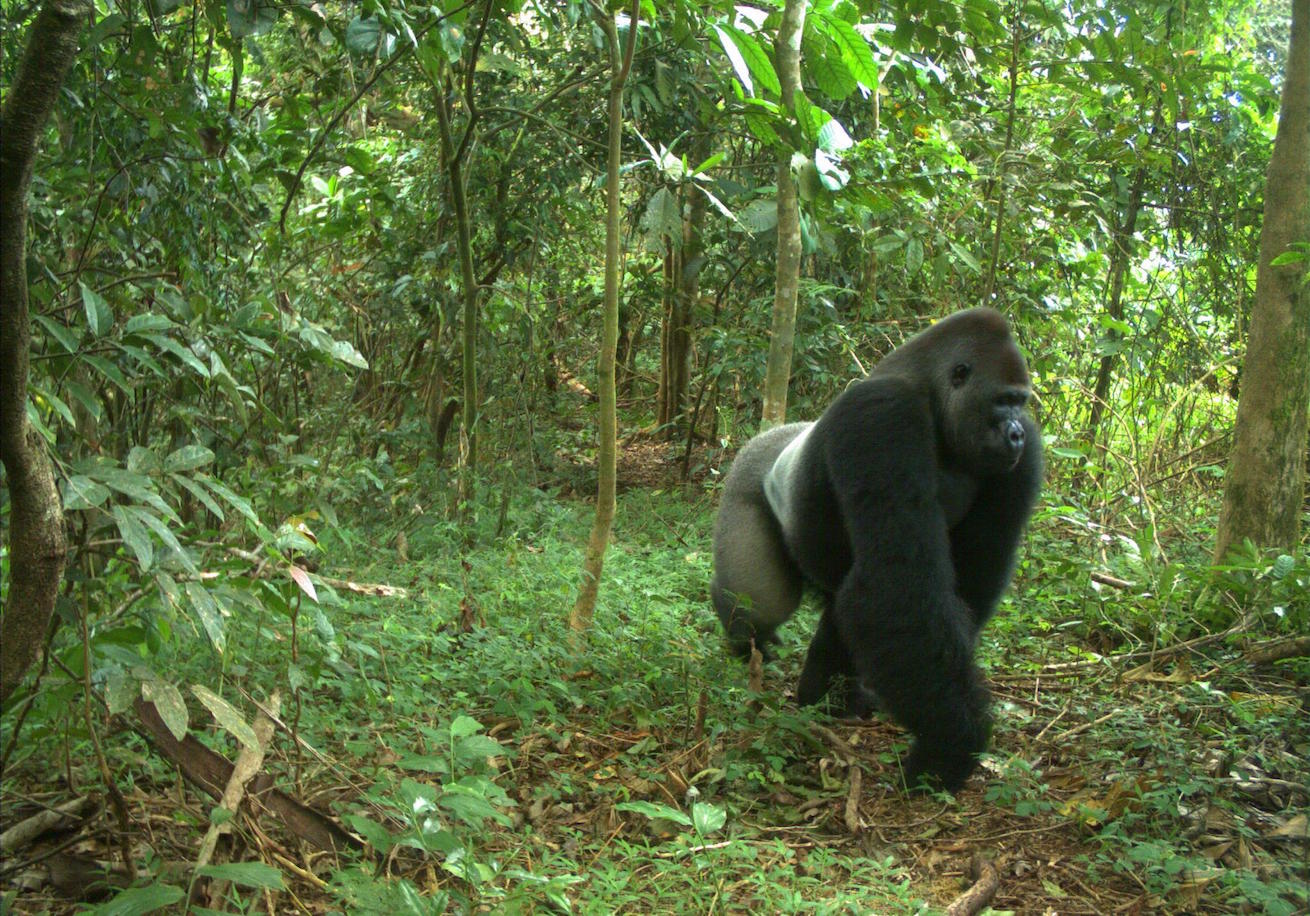- The Cross River gorilla, which lives in the mountainous border area of Nigeria and Cameroon, is Africa’s most threatened ape, with a population estimated at fewer than 300 individuals.
- The European Union will provide 2 million euros ($2.19 million) over four years to help support programs aimed at protecting Cross River gorillas by supporting sustainable livelihoods for people living near gorilla habitat.
- The funding will support work led by the Wildlife Conservation Society and Nigeria National Park Service.
- It will allow existing WCS livelihood programs in Cross River state to be expanded to more areas and communities, aimed at preventing locals from deforesting the area in search of a livelihood.
By supporting programs aimed at securing the economic well-being of communities in Nigeria’s Cross River state, the European Union hopes to help protect Cross River gorillas (Gorilla gorilla diehli), Africa’s most threatened great ape.
On March 10, the Wildlife Conservation Society (WCS) announced that the EU is providing 2 million euros ($2.19 million) over four years to help protect Cross River gorillas by securing their habitat and reducing human-driven pressures that threaten their long-term survival. The funding will serve to augment and expand existing livelihood programs led by WCS and the Nigeria National Park Service.

Rising threats
Bushmeat hunting, logging, expansion of settlements and agricultural encroachment continue to jeopardize the survival of the Cross River gorilla, a critically endangered subspecies down to fewer than 300 individuals in the wild.
In addition to gorillas, the rainforests of Cross River state host threatened species like the Nigeria-Cameroon chimpanzee (Pan troglodytes ellioti), drill monkey (Mandrillus leucophaeus), forest elephant (Loxodonta cyclotis), Preuss’s red colobus (Piliocolobus preussi), and the grey-necked rockfowl (Picathartes oreas).
Most of the communities living adjacent to these biodiversity hotspots depend on the forest and its resources for their survival.
The primary source of income in the area is cocoa farming, along with the harvesting of non-timber forest products like bush mango, chewing sticks, and the edible afang vines, known locally as eru.
These activities push local people into the forests in search of new areas to cultivate and forest products to harvest, and consequently contribute to deforestation and habitat fragmentation for gorillas and other wildlife.

Searching for alternatives
The primary aim of the new EU funding is to ease pressure on the forest by promoting and supporting sustainable livelihoods for communities that live alongside the gorilla’s habitat.
It will focus mainly on Cross River National Park, which has two non-contiguous divisions, Oban and Okwangwo, covering a combined area of about 4,000 square kilometers (1,545 square miles). The Okwangwo division is contiguous with Takamanda National Park in Cameroon, and together both parks constitute the stronghold of Cross River gorillas.
WCS, which has been working with area communities since 2001, will coordinate the project alongside the Nigeria National Park Service.
The group plans to scale up existing livelihood programs to target 40 communities on the fringes of the Oban and Okwangwo divisions, training some 1,000 households in sustainable cocoa production and bush mango harvesting. WCS also hopes to use the funding to purchase patrol vehicles, build and renovate ranger posts, and improve training for rangers and conservation education in local communities.
“If conservation must work we need to think about livelihoods,” said Juliet Ntui, the WCS socioeconomic coordinator in Cross River.
Field workers will distribute improved cocoa seedlings that mature early to hundreds of farmers. Workers will also assist farmers in cutting unproductive old cocoa trees and replacing them with the new seedlings, rather than establishing new farms.
Most local farmers practice shifting cultivation and typically prefer clearing new areas in the forest to start fresh farms when soil on existing fields becomes less fertile, said Augustine Ogogo, a professor at the University of Calabar’s Department of Forestry and Wildlife Resources Management.
“Cocoa is also one of the main causes of deforestation in the state — the largest one — so by engaging with cocoa we hope to do two things: to make cocoa more sustainable to reduce the impact on the forest but also then boost local incomes and get people a bit more supportive of conservation and national parks,” said WCS Nigeria director Andrew Dunn.

Damien Sunday Aria, a local chief in Wula village in the Mbe mountains, said farmers there who previously received training from WCS were able to regenerate old cocoa farms with close monitoring from WCS field staff.
“With improved seeds we had bumper harvests,” Aria said, but he added that much more needs to be done to reduce “mounting pressure on the forest.”
“We need the donors and NGOs to help us more and more with livelihood alternatives so our people will no longer disturb the forest.”
WCS said the livelihood programs do have potential pitfalls, such as farmers using the new seedlings to establish new farms inside the forest.
“You could actually increase deforestation rate if you are not careful,” Dunn said. “We are working with individual farmers and each farmer is supposed to sign a conservation contract in return for cocoa seedlings.” WCS field staff monitor the farmers to ensure they stick to this agreement.
Dunn said they will also be careful not to raise “unrealistic expectations among local communities.”
Ogogo said involving communities in conservation projects makes for successful outcomes.
“The local communities know the roads where hunters pass; they know where gorillas are and where they hide at certain periods of the year; they understand the surroundings better than anyone so you need to engage them and let them also be part of the project and [champion] conservation efforts,” Ogogo said.
FEEDBACK: Use this form to send a message to the author of this post. If you want to post a public comment, you can do that at the bottom of the page.